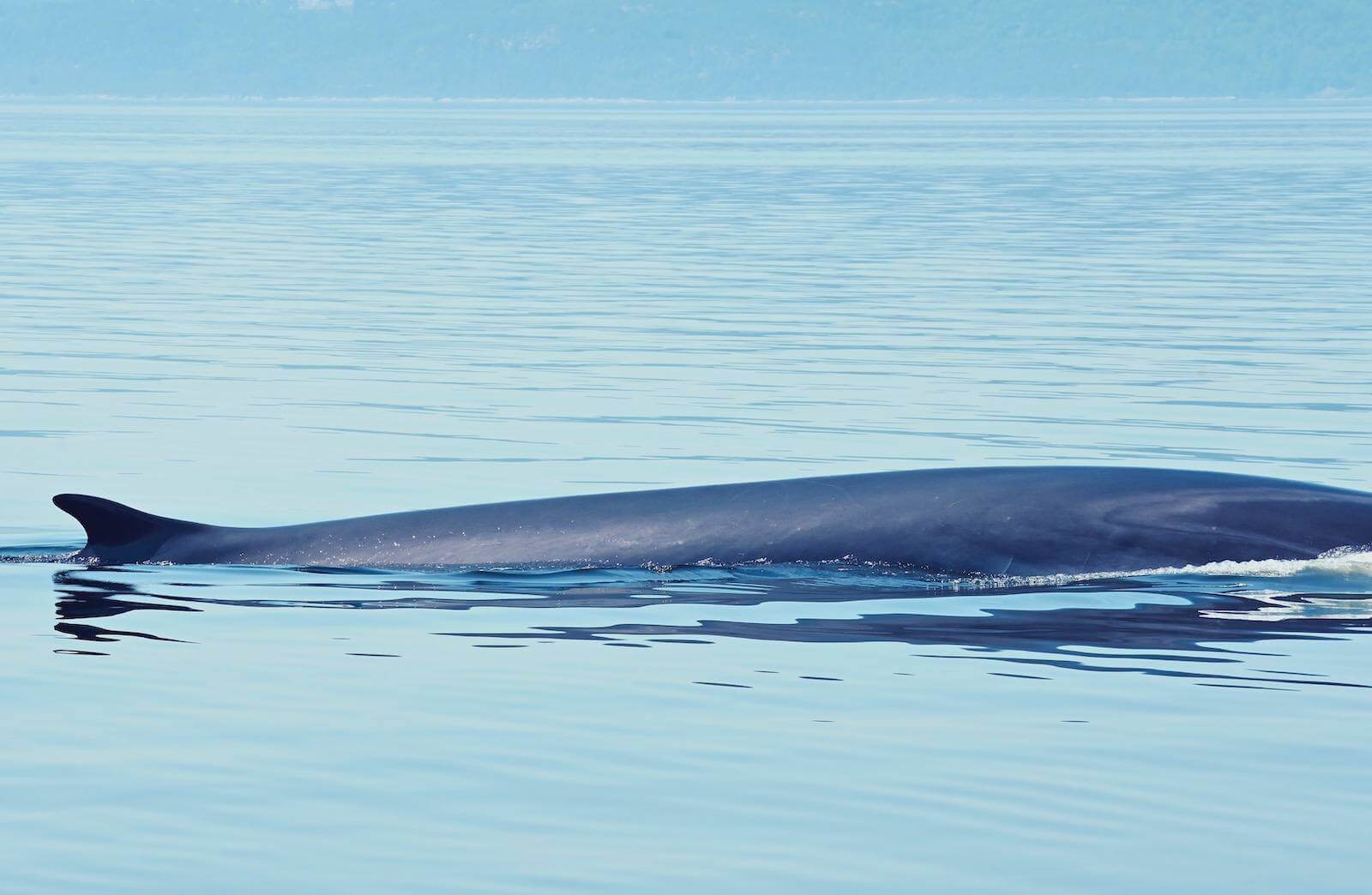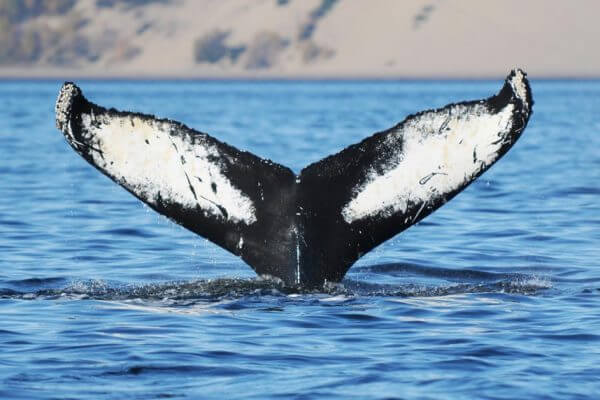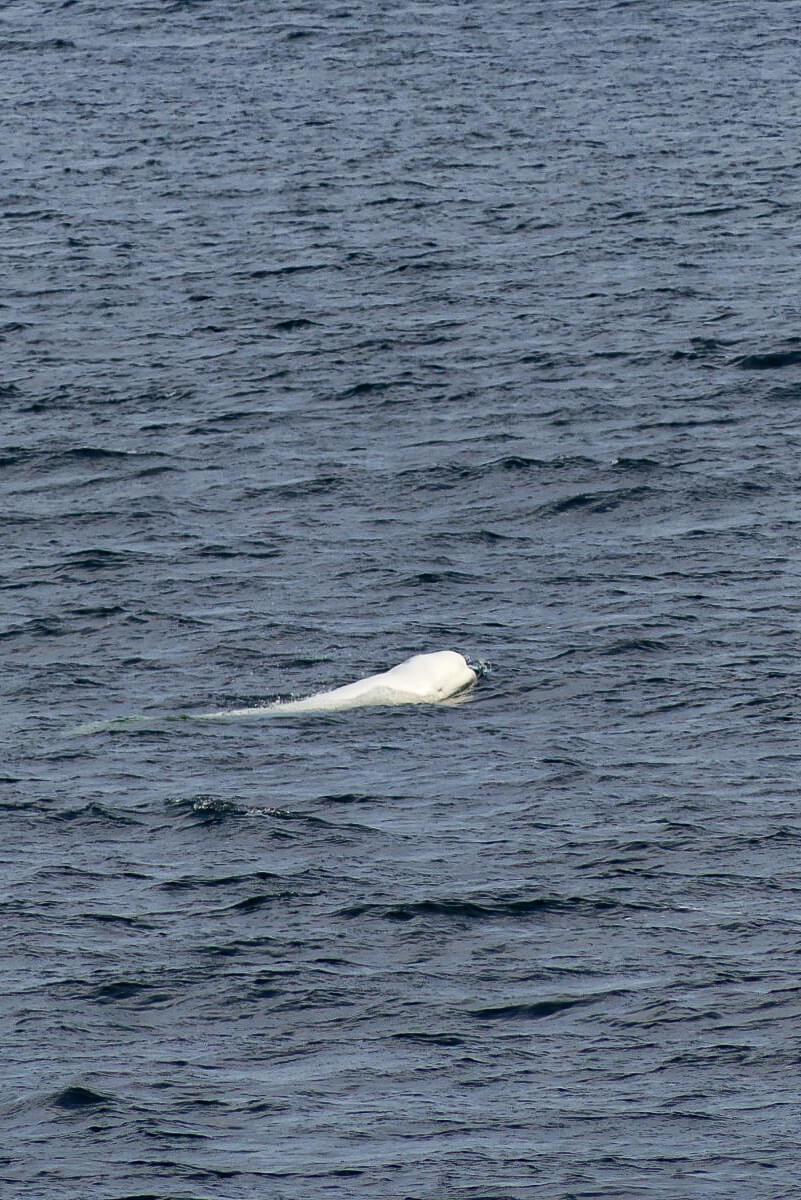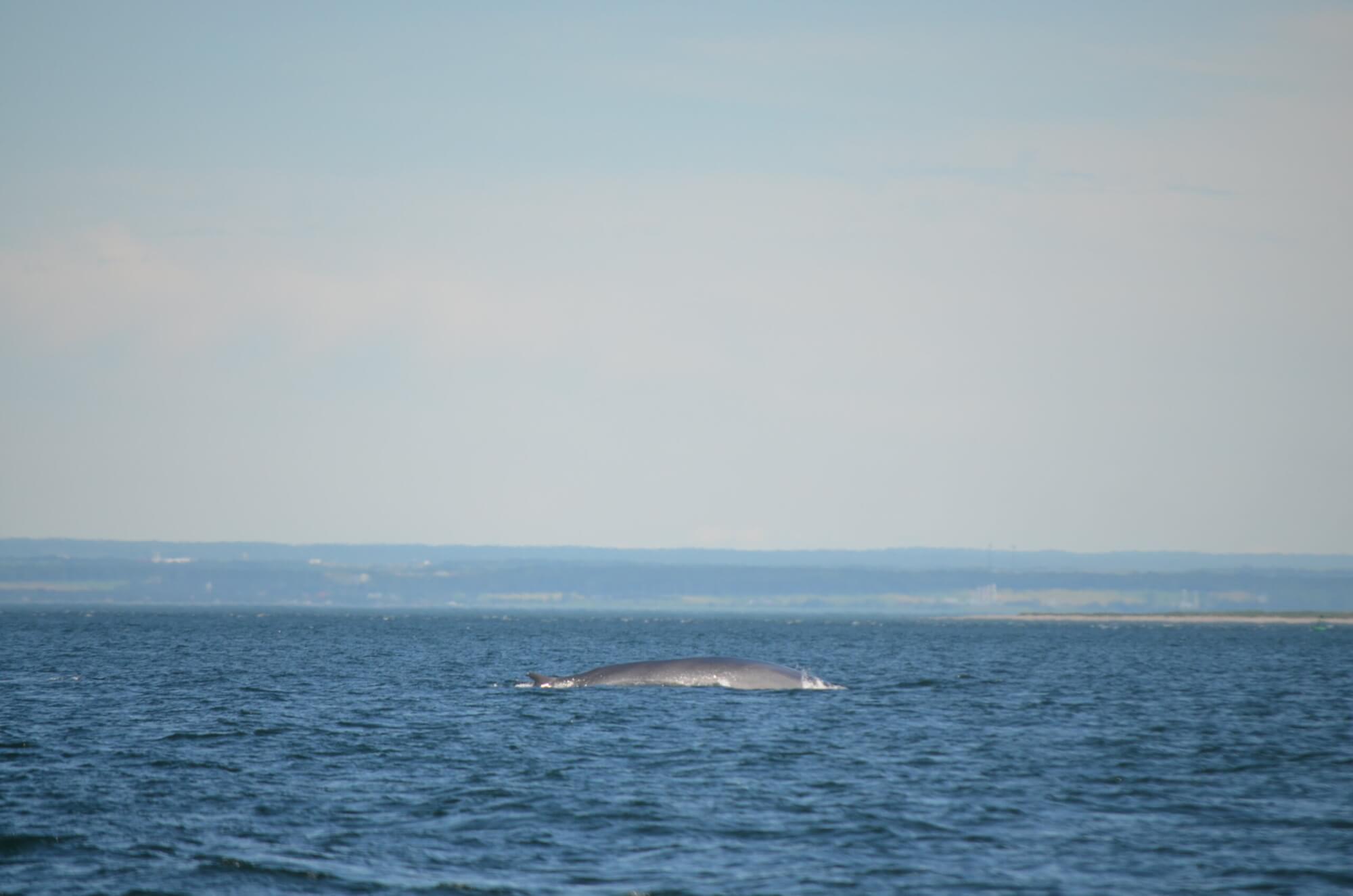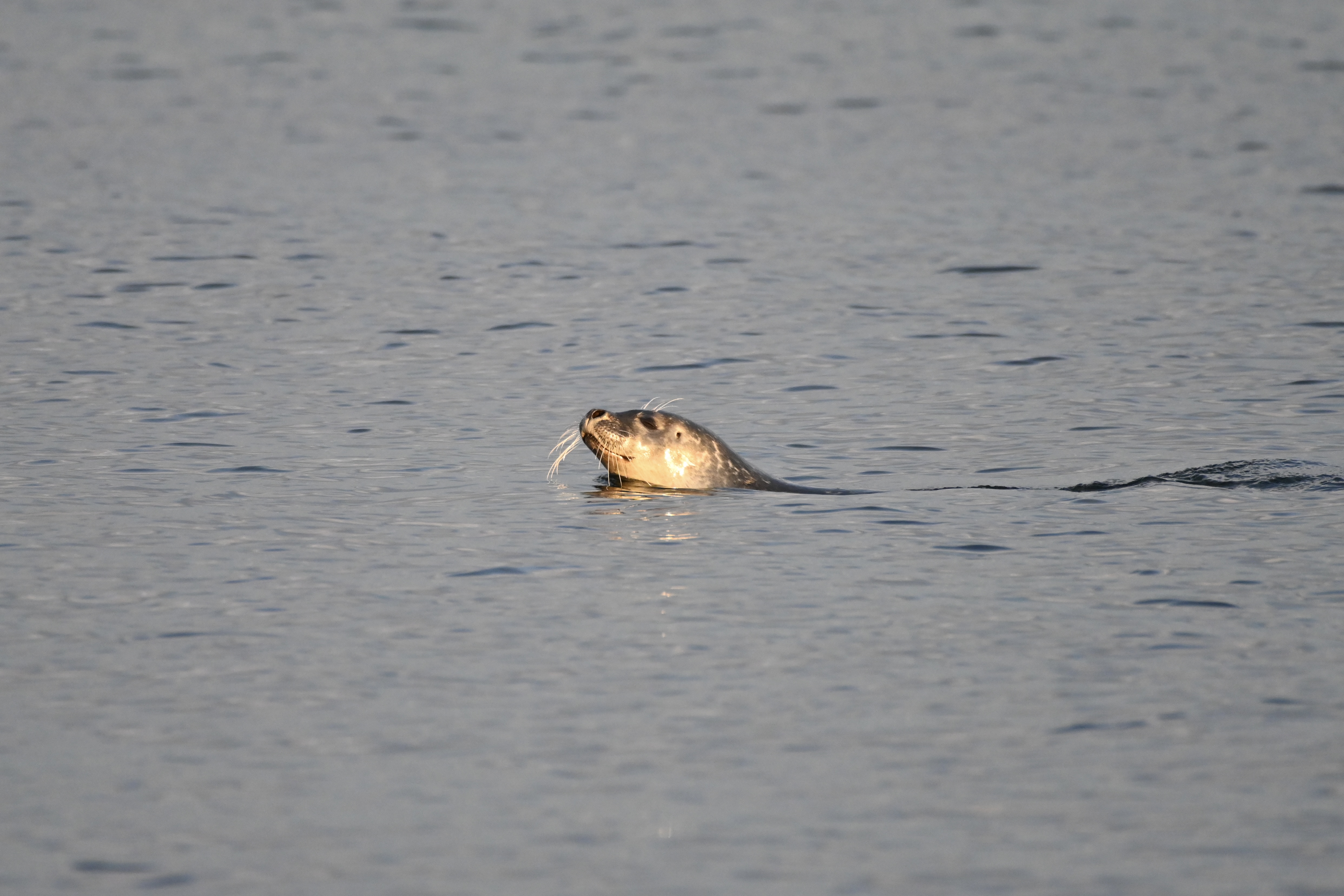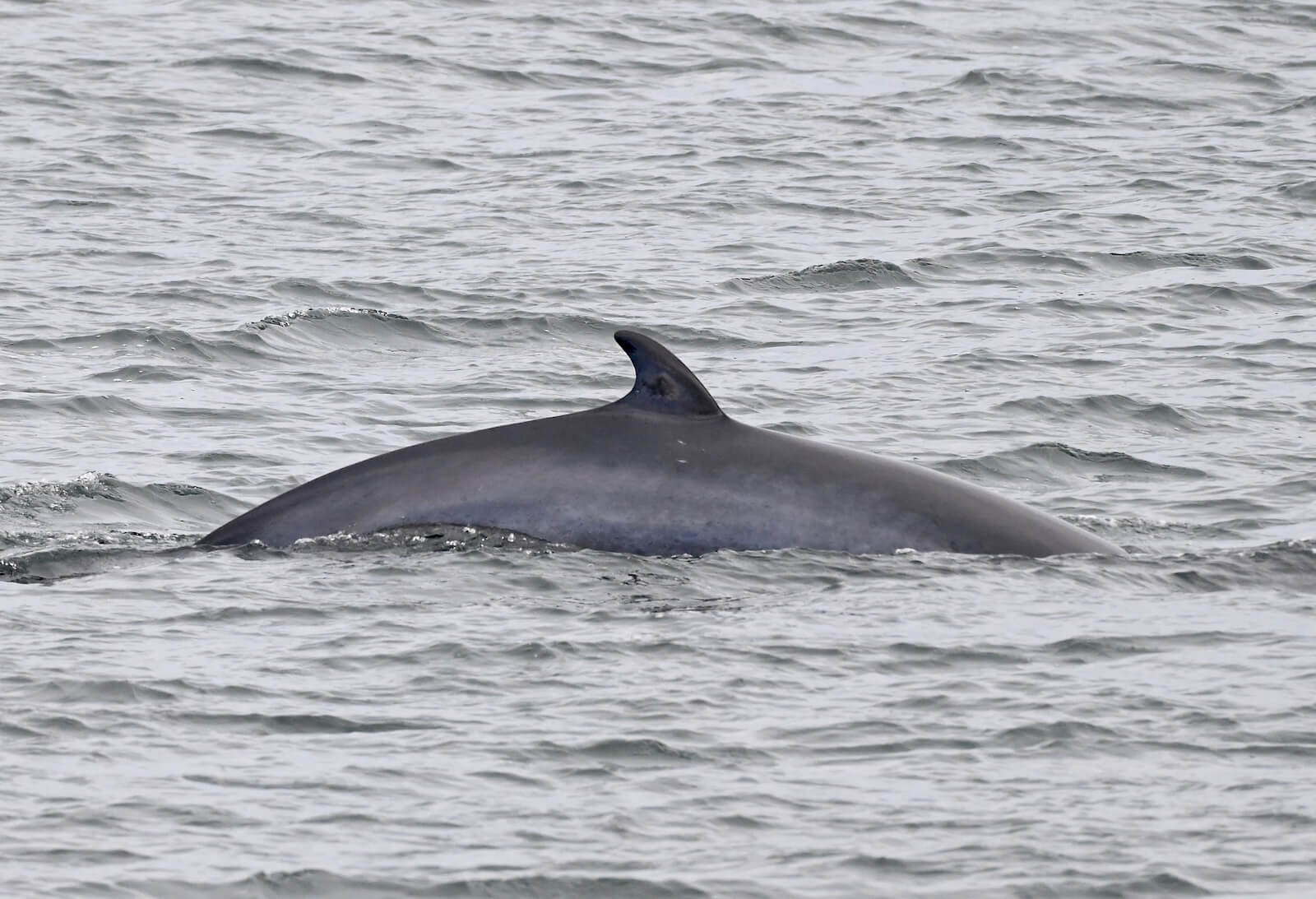It appears that whales have finally made a big return to the estuary and gulf! From one end of the St. Lawrence to the other, several large rorquals have been reported, not to mention the numerous minke whales, seals and even harbour porpoises that bring smiles to the faces of those observing them.
Celebrity rorquals
Gaspar and Piton, two stars of the St. Lawrence, were both seen this past week! Gaspar is a female humpback that has been observed almost annually since 2006. It is therefore exciting to see her coming to feed in the estuary once again this year! She is easily recognizable thanks to the colour pattern on the ventral side of her caudal fin. Her right lobe shows the shape of the famous ghost to which she owes her moniker. The fin whale Piton is also amongst the estuary’s most faithful visitors, having been seen almost every year since 2010! It is recognizable by its highly contrasting chevrons. Piton owes its name to the small protuberance on its left chevron. The fin whale Bp919 was also identified and the mysterious, potentially hybrid rorqual is still roaming the sector.
Blue whales in the gulf
For the Mingan Island Cetacean Study (MICS), the season is off to a strong start with several IDs. The MICS team tallied one blue whale, two fin whales and two humpbacks in the Mingan sector. Seals and harbour porpoises were also reported. In the Sept-Îles area, two blue whales were identified, while two sightings of this species were also reported from the Gaspé.
During an outing in the estuary, a navigator who collaborates with MICS is thrilled with his observations of large rorquals, especially since his previous trips this spring were not so productive. He shares the day’s trip list: “Eight fin whales, two blues, three humpbacks, three belugas and one minke. A reassuring yield after a long dry spell.” In Sept-Îles, smoke is putting a damper on observations from shore, though harbour porpoises and minke whales have been mentioned.
“Dozens upon dozens of porpoises… I’ve never seen so many! They’re everywhere!” exclaims a resident of Franquelin when describing the presence of marine mammals in his area, where minke whales and a humpback whale were also observed.
In Gaspé Bay, the marine mammal tally is growing: “Harbour porpoises, minke whales, one blue whale (our first of the summer!), four fin whales and around ten humpbacks,” writes in one naturalist. Every day is different depending on the winds, tides and temperature. Observations go from feast to famine. “Some days are chock-full of whales, others they are more difficult to observe apart from harbour seals lazing on the rocks accompanied for the season by the occasional grey seal, a handful of porpoises and a few minke whales.” A basking shark also reportedly ventured into the bay. In the salty waters off Grande-Vallée, a few white whales entertained the locals who stopped to admire them.
At the water’s edge
On June 24, a marine mammal enthusiast in Les Escoumins heads to the coast for a little whale watching on the rocks. The day would be punctuated with whales and surprises: “I spotted a blast offshore,” she begins, “hard to say what species it was without my binoculars, but during the dive I think I saw a tail resembling that of a humpback. As I wait for it to surface again, I hear a minke whale blow, so close I can’t see it because of the rocks.”
She stands up to look for it, expecting to see it resurface any second. Several individuals were also present on site, just before the sighting took an unexpected turn. “Suddenly, there was a loud blow from a large whale; it was a fin whale, less than 100 metres from the rocks! Everyone is amazed. We forget about the minke whales and the humpback and for a half hour our focus of attention is on the fin whale swimming near the cove known as Anse à Jos. At one point, a minke whale was swimming near the fin whale; perhaps there was food and they were sharing the buffet! A minke whale also passed near the rocks where the fin whale had been a few minutes earlier.”
Several harbour porpoises were also spotted swimming near the banks. The following day, a juvenile leaped completely out of the water. “It was really cute! Juveniles are already adorable because they’re so small, but to see one literally jump out of the water like a dolphin, my heart just melted!”
From Cap de Bon-Désir, naturalists admire the marine fauna, the fresh river breeze and a jaw-dropping landscape. They see a humpback whale blowing in the distance, a few harbour porpoises and a minke whale. “Between the sunset and the calm sea,” describes one of them, “it was simply awesome to watch the minke whale surface while the humpback was blowing in the background.” All along the coast, Whales Onlinecollaborators are also reporting the presence of groups of belugas, grey seals and harbour seals, not to mention two fin whales farther offshore.
Where are the whales this week? Observation map
These data were reported by our network of observers. The observations give a rough idea of the presence of whales, but do not in any way represent the true distribution of cetaceans in the St. Lawrence. Enjoy!
Click on the whale or seal icons to see the species, number of individuals observed, additional information or photos of the sighting. To zoom in on the map, click on the icon in the upper right corner. The map works well on Chrome and Firefox, but less so on Safari.
To display the list of observations, click on the icon in the upper left corner.
Thanks to all our collaborators!
Special thanks go out to all our observers who share their love for marine mammals with us! Your encounters with cetaceans and pinnipeds are always a pleasure to read and discover.
On the water or from shore, it is your eyes that give life to this column.
Rachel Bois
Ginette Cormier
Guylaine Côté
Marie-Andrée Charleboix
Thalia Cohen-Bacry
Laetitia Desbordes
Gabriel GL
Jade-Audrey Lavergne
Yael Medav
Élizabeth Melis
Camille Nem
Diane Ostiguy
Daniel Patry
Chloé Pazart
Renaud Pintiaux
Pascal Pitre
Jean Roy
Marie-Josée Roy
René Roy
Andréanne Sylvain
Véronique Tanguay
Marielle Vanasse
And all those we left out!
Additionally, we would like to acknowledge the following teams that also share their sightings:
Sept-Îles Research and Education Centre (CERSI)
Group for Research and Education on Marine Mammals (GREMM)
Marine Mammal Observation Network (MMON)
Quebec Marine Mammal Emergency Response Network (QMMERN)
Mingan Island Cetacean Study (MICS)
Would you also like to share your observations?
Have you seen any marine mammals in the St. Lawrence? Whether it’s a spout offshore or just a couple of seals, drop us a line and send your photos to [email protected]!


